Filter by
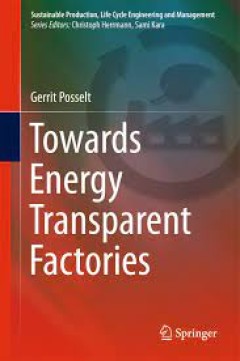
Towards Energy Transparent Factories
This monograph provides a methodological approach for establishing demand-oriented levels of energy transparency of factories. The author presents a systematic indication of energy drivers and cost factors, taking into account the interdependencies between facility and production domains. Particular attention is given to energy flow metering and monitoring. Readers will also be provided with an…
- Edition
- 1
- ISBN/ISSN
- 978-3-319-20868-8
- Collation
- XXXII, 284
- Series Title
- Sustainable Production, Life Cycle Engineering and Management
- Call Number
- -
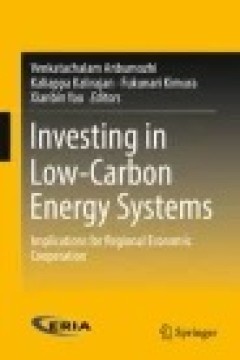
Investing in Low-Carbon Energy Systems: Implications for Regional Economic Co…
This book focuses on multi-level actions that have attracted considerable interest and discussion within academia, decision makers and the public as a tool to assess anthropogenic effects of low-carbon energy development. The book begins with an overview of the state of the art policies in emerging economies, which provides a starting point for understanding the concept of low-carbon green grow…
- Edition
- -
- ISBN/ISSN
- 978-981-10-0761-3
- Collation
- -
- Series Title
- -
- Call Number
- -

Sustainable Agricultural Development
This book provides an up-to-date assessment of sustainable agri-food systems and rural development in the Mediterranean countries. It examines and reviews the impact of EU and national policies on environmental and trade issues in agricultural and rural organizations in the southern and eastern Mediterranean region. The book also reflects key socio-economic and political issues such as resource…
- Edition
- -
- ISBN/ISSN
- 978-3-319-17813-4
- Collation
- XIX, 334
- Series Title
- Cooperative Management
- Call Number
- -

Essays on Gödel’s Reception of Leibniz, Husserl, and Brouwer
This volume tackles Gödel's two-stage project of first using Husserl's transcendental phenomenology to reconstruct and develop Leibniz' monadology, and then founding classical mathematics on the metaphysics thus obtained. The author analyses the historical and systematic aspects of that project, and then evaluates it, with an emphasis on the second stage. The book is organised around Gödel…
- Edition
- -
- ISBN/ISSN
- 978-3-319-10031-9
- Collation
- XIV, 328
- Series Title
- -
- Call Number
- -
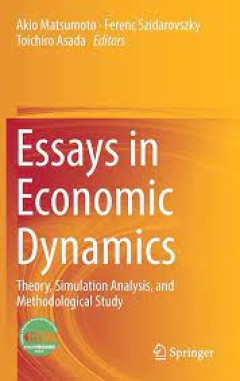
Essays in Economic Dynamics Theory, Simulation Analysis, and Methodological …
This book reflects the state of the art in nonlinear economic dynamics, providing a broad overview of dynamic economic models at different levels. The wide variety of approaches ranges from theoretical and simulation analysis to methodological study. In particular, it examines the local and global asymptotical behavior of both macro- and micro- level mathematical models, theoretically as well a…
- Edition
- -
- ISBN/ISSN
- 978-981-10-1521-2
- Collation
- 79 b/w illustrations
- Series Title
- -
- Call Number
- -

Invertebrates in Freshwater Wetlands: An International Perspective on their E…
Wetlands are among the world’s most valuable and most threatened habitats, and in these crucially important ecosystems, the invertebrate fauna holds a focal position. Most of the biological diversity in wetlands is found within resident invertebrate assemblages, and those invertebrates are the primary trophic link between lower plants and higher vertebrates (e.g. amphibians, fish, and birds).…
- Edition
- -
- ISBN/ISSN
- 978-3-319-24978-0
- Collation
- -
- Series Title
- -
- Call Number
- -

Toward Well-Oiled Relations?
With China replacing the United States as the world's leading energy user and net oil importer, its relations with the Middle East is becoming a major issue with global implications. Horesh and his contributors set out to analyse the implications of China's growing presence in the Middle East.
- Edition
- 1
- ISBN/ISSN
- 978-1-137-53978-6
- Collation
- XII, 239
- Series Title
- The Nottingham China Policy Institute Series
- Call Number
- -
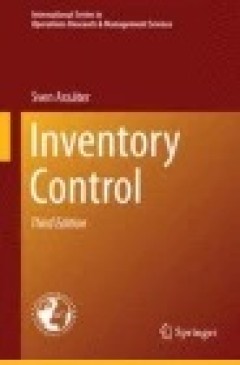
Inventory Control
This third edition, which has been fully updated and now includes improved and extended explanations, is suitable as a core textbook as well as a source book for industry practitioners. It covers traditional approaches for forecasting, lot sizing, determination of safety stocks and reorder points, KANBAN policies and Material Requirements Planning. It also includes recent advances in inventory …
- Edition
- -
- ISBN/ISSN
- 978-3-319-15729-0
- Collation
- -
- Series Title
- -
- Call Number
- -

Toward Sustainable Operations of Supply Chain and Logistics Systems
This book addresses critical issues in today’s logistics operations and supply chain management, with a special focus on sustainability. In dedicated chapters the authors address aspects concerning multimode logistics operations, reverse network configuration, forward and reverse supply chain integration, improvement of the production operations and management of the recovery activities, as w…
- Edition
- 1
- ISBN/ISSN
- 978-3-319-19005-1
- Collation
- XI, 550
- Series Title
- EcoProduction
- Call Number
- -
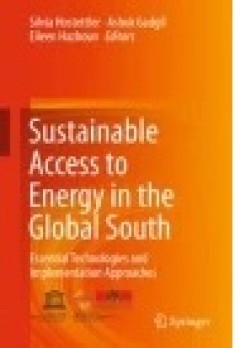
Sustainable Access to Energy in the Global South
Presenting the best papers of the 3rd EPFL-UNESCO Chair Conference on Technologies for Development, this publication offers a valuable collection of innovative case studies exploring access to energy and renewable energy technologies in the Global South. It investigates the key determinants for successfully providing energy to resource-poor communities and examines a wide range of technologies …
- Edition
- -
- ISBN/ISSN
- 978-3-319-20209-9
- Collation
- XVIII, 254
- Series Title
- -
- Call Number
- -
 Computer Science, Information & General Works
Computer Science, Information & General Works  Philosophy & Psychology
Philosophy & Psychology  Religion
Religion  Social Sciences
Social Sciences  Language
Language  Pure Science
Pure Science  Applied Sciences
Applied Sciences  Art & Recreation
Art & Recreation  Literature
Literature  History & Geography
History & Geography